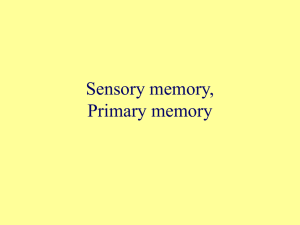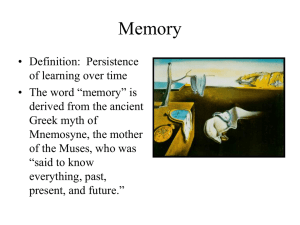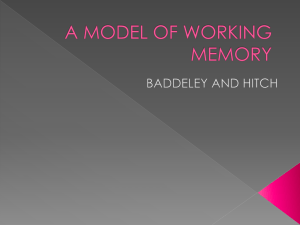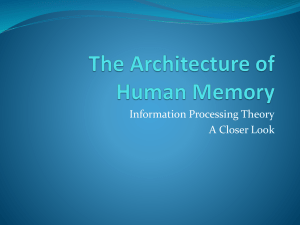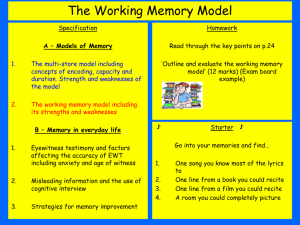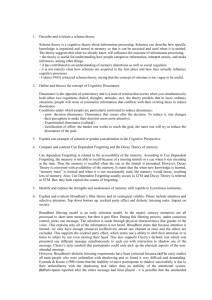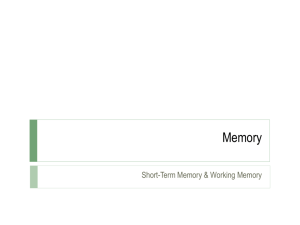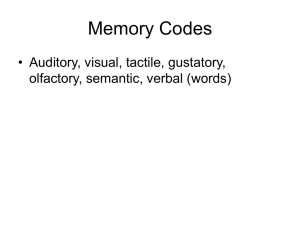Working memory - VirtualPsychology
advertisement
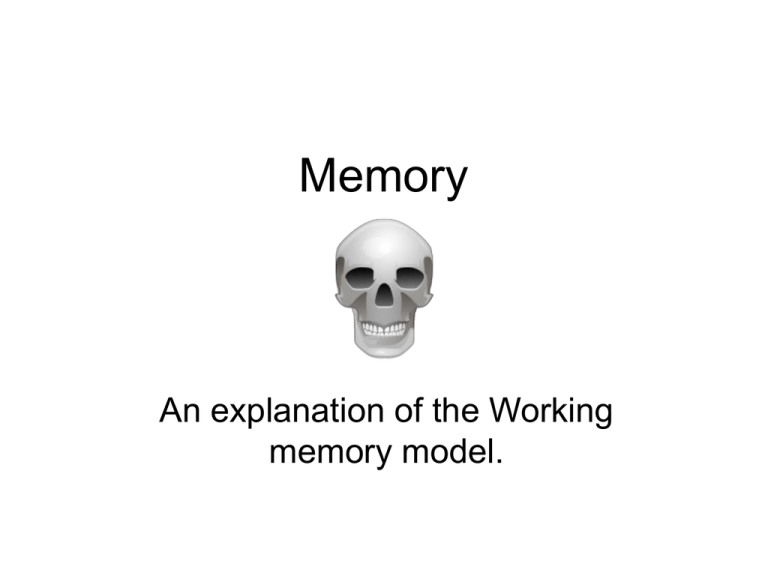
Memory An explanation of the Working memory model. A diagram...what the hell is this??? Psychologist The information needs Visual skills that only psychologists have. Central executive assigns the information to the relevant dept/person for the job. But it can only do this one piece of information at a timeIt has a limited capacity (like the STM!) Politician This information requires phonological attention. Counsellor This information needs a good listener someone with auditory skills.. All as one! • All of the centres work together to process the information. • But the central executive has overall responsibility for control processes e.g. 1. Setting tasks 2. Planning & co-ordinating the activity that needs to e carried out. 3. Switching attention between tasks. • Thus you could name the central executive the fat controller. Phonological Loop Known by some as the inner voice- It has a limited capacity with only temporary storage for holding verbal information (spoken). Visuo-Spatial Sketchpad. Also known as the ‘inner eye’ again like the phonological loop it has a limited capacity & a temporary storage system for holding visual (seen) and spatial information. Working memory model • Therefore we have established the Phonological loop and Visuo spatial Sketchpad are ‘slave systems’ that support the central executive. • Their space can be used and freed up, thus supporting the demands of information –processing tasks. • However it is important to remember the slave systems have separate responsibilities and work independently of one another. Is there any evidence to support the different stores? • In short...there have been a number of studies that have strived to support the model. What is needed is: • An understanding of the research. • Methodological Issues. • Ethical Issues. Evidence- Visuo scratchpad. • Conrad (1964)- When presenting Ps with visual letters they become muddled when asked to recall similar sounding letters immediately e.g. ‘s’ & ‘f’. • Baddeley (2003)-Visualising American football game whilst driving. He found the car began to swerve. • McClelland et al (2006)-Imagine fav foods whilst forehead tracking (tapping an imaginary line across the forehead & follow fingers with eyes.) • Each of the above found the tasks difficult as two things at once on one store impairs performance! Evidence-Central Executive. • Imbo et al (2007)- Changing difficulty of sums. He changed the carry over to make the sums more difficult e.g. 17 x 17(easy) 17x 21(more difficult). Having more sums makes it difficult on the working memory and uses both the Phonological loop & central executive. Evidence- Phonological loop. • Baddeley et al (1975)-Word length was investigated. Ps were asked to write down 5 words in serial order immediately after presentation. Simultaneously they were prevented via interference from rehearsing the information. • Articulatory suppression fills the phonological loop and removes the advantage of rehearsing. The central executive takes over recall as some words are recalled!! In summary • Within the WWM certain systems are crystallized (i.e. They remain unchanged/ the same) Whilst other systems are fluid i.e. They have the potential to be more flexible. crystallized Central Executive Visuo-Spatial Scratchpad Episodic Buffer Visuo-spatial Semantics. Episodic LTM Phonological Loop Language fluid The good, The bad, The ugly! The existence of the phonological loop and visuo-spatial sketchpad is well documented. Practical Implications. (Reading skills) WWM influential and still being developed & expanded. Not much is known about the Central executive (the most integral store!) no one has been able to quantify it scientifically. Furthermore what is the role of the central executive. Language is vague i.e. We find ourselves in a circular argument. Contradicting evidence: VSSP & Phonological loop working together causes interference (Conrad 1964) measuring brain activity should show this….it does not.
